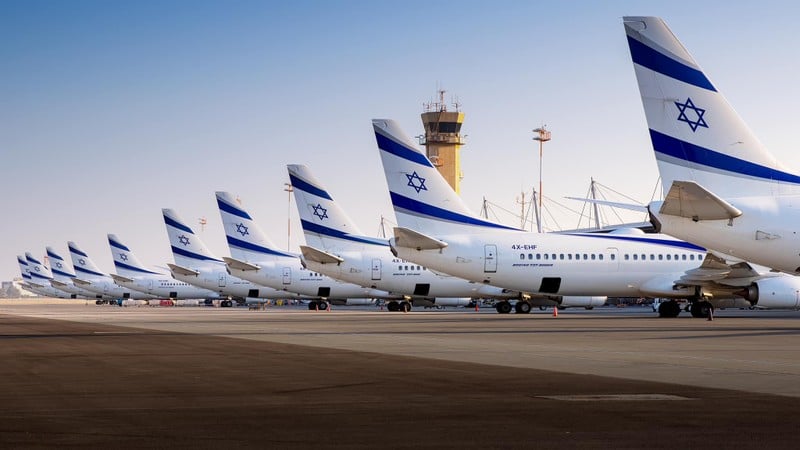There may have been foreign tourists, business travelers on board.
Namibia police are searching the Kavango West region – where the plane was last heard from. The region is sparsely populated and covered with wetlands and dense forests.
A LAM Mozambique Airline plane with 28 passengers and six crew has gone missing from Maputo, Mozambique to Luando, Angola is reporting a missing plane flight from Maputo to Luanda. Some experts say it may have come down near border between Namibia and Angola, however initial information suggests it might have landed in Rundo, in northern Namibia near the border with Botswana and Angola.
Flight TM470 took off from Maputo at 0926 GMT on Friday and had been due to land in the Angolan capital Luanda at 1310 GMT, but never arrived, the airline said in a statement.
It shows even in the 21st century the African Sky can be remote and communication a real challenge. LAM airlines, aeronautical and airport authorities are trying to establish contact to confirm the information.
Airline Spokesman Norberto Mucopa told the AFP news agency he could not confirm the nationalities of those on board.
Linhas Aéreas de Moçambique, Ltd., operating as LAM Mozambique Airlines. is the flag carrier of Mozambique. The airline was established by the Portuguese colonial government of Mozambique in August 1936 as a charter carrier named Direcção de Exploração de Transportes Aéreos, and was renamed in 1980 following reorganization.
LAM Mozambique Airlines is based in Maputo, and operates scheduled services in southern Africa and Europe. The company is a member of the International Air Transport Association, and of the African Airlines Association since 1976.LAM Mozambique Airlines is on the list of airlines banned in the EU, as of April 2011.
The airline was established on 26 August 1936 as DETA – Direcção de Exploração de Transportes Aéreos, as a division of the Department of Railways, Harbours and Airways of the Portuguese colonial government of Mozambique.Charter flights were operated for a short period of time until a regular airmail service commenced on 22 December 1937 using a Dragonfly, a Hornet and two Rapides. Shortly afterwards, these services started carrying passengers, most of them government officials. Flown with Rapides, the Lourenço Marques–Germinston route was one of the company’s mainstays in the early years; it was operated on a twice-weekly basis, and connected with Imperial Airways services to London
In April 1938, the eight-hour long domestic Lourenço Marques–Inhambane–Beira–Quelimane coastal route was opened. DETA passengers that were flown along the Mozambican coast could also connect with Imperial services at Lourenço Marques. At that time, Imperial Airways ran a service between Cape Town and Cairo that called at Lourenço Marques. Early in 1938, DETA had signed a contract with Imperial for the provision of such feeder services. During the spring, another Hornet was incorporated into the fleet.[11] Also in 1938, the airline acquired three Junkers Ju-52s and two more Rapides.
The coastal service was extended farther north in October, reaching Port Amelia.[11] At April 1939, one Drangonfly, one Hornet, three Junkers Ju-52s and six Rapides were part of the fleet. Most of the operations came to a halt following the outbreak of World War II.
A Beira–Salisbury route was launched in February 1947, with scheduled services to Durban and Madagascar also starting by the end of that year.
By March 1952 the carrier was operating a 2,000-mile (3,200 km) long route network that included domestic services as well as international ones to Durban, Johannesburg and Salisbury, served with a fleet of six Doves, five Rapides, three Douglas DC-3s, two Lockheed Lodestars, a Lockheed L-14 and a Junkers Ju-52.
A new Moçambique–Nampula–Vila Cabral run that called at three more intermediate stops was opened in 1954. The last leg of this service was temporarily suspended when Vila Cabral was excluded from the airline’s list of destinations, but flights to the city were later reinstated after Vila Cabral got linked with Beira via Vila Pery, Tete and Vila Coutinho.
At March 1955, the carrier’s fleet included three DC-3s, six Doves, one Dragon Fly, four Dragon Rapides, two Junkers Ju-52/3s, one Lockheed 14H, two Lodestars and two Horner Moths.
The airline was one of the latest worldwide to operate the Junkers Ju-52s on scheduled services. Two of these aircraft were still part of the aircraft park in April 1960, along with three DC-3s, four Doves, three Lodestars and four Rapides that operated a domestic network plus international services to Durban, Johannesburg and Salisbury.
DETA started a fleet modernization in the early 1960s, when three Fokker F27-200s ordered in June 1961, making the airline the 64th customer for the type, had already been handed over to the company by August 1962; the first of them was named “Lourenço Marques” after the capital city of Portuguese East Africa. DETA and Air Malawi inaugurated the Beira–Blantyre service in 1964.
It was operated in a pool agreement between the two carriers. In 1965, Nova Freizo[nb 1] was added to the route network; in November that year, a service linking Beira with Lourenço Marques was launched. In March 1966, DETA and Swazi Air commenced flying the Lourenço Marques–Manzini run on a joint basis.
Two Boeing 737-200s were ordered in 1968 both to complement the three F27s, six DC-3s, one Dove, and one Beaver already in the fleet, and to support the company’s regional expansion, that had grown up to five destinations regionally served with the addition of Blantyre and Manzini to the network. The first of these machines entered the fleet in 1969.The airline would order two more Boeing 737-200s in the forthcoming years, taking possession of the fourth one in 1973.
Mozambique gained its independence from Portugal in 1975.
Intercontinental services started in 1976 serving the Lourenço Marques–Beira–Accra–Lisbon route, at first with a Boeing 707-320, and then with a Boeing 707-320C leased from Tempair International Airlines. In 1979, a Douglas DC-8 was ordered.
DETA was Mozambique’s flag carrier until 1980. Following allegations of corruption, the airline was restructured and renamed LAM – Linhas Aéreas de Moçambique early that year Four more Boeing 737-200s were ordered in 1981. The Douglas DC-8-62 that had been ordered at the end of the DETA era arrived in 1982. In 1983, a Douglas DC-10-30 was ordered. Also in 1983, a Maputo–Manzini–Maseru service that was flown using F-27 equipment was launched in cooperation with Lesotho Airways. The DC-10-30 joined the fleet in 1984, and new services to East Berlin, Copenhagen and Paris were started. At March 1985, the carrier had 1,927 employees.
At this time, the DC-10-30 and three Boeing 737-200s (including a convertible one) worked on a route network radiating from Maputo that served Beira, Berlin-Schonefeld, Dar-es-Salaam, Harare, Johannesburg, Lisbon, Lusaka, Manzini, Maseru, Nampula, Paris, Pemba, Sofia and Quelimane.
TACV Cabo Verde Airlines leased the DC-10 in the weekends during 1985.
The first Boeing 737-300 entered the fleet in 1991.[31] By April that year, employment was 1,948, and the fleet consisted of two Boeing 737-200s (including a convertible one), one Boeing 767-200ER (plus another one on order) and four CASA 212-200s.
The company had returned the 737-300 to the lessor in 1995 due to the inability of the company to afford the leasing costs of the aircraft, and a Boeing 767-200ER would follow the same fate late that year. An ex-Royal Swazi Fokker 100 was leased in October 1996.
On 23 December 1998 LAM was transformed into a limited company, adopting the denomination of LAM – Mozambique Airlines by Decree no. 69/98. A limited company incorporated by statute in Mozambique was formed in late 1999.[3] As of November 2013, the state holds 91% of the shares and the employees hold the balance; the carrier employs a staff of 695. The company Moçambique Expresso, set up in September 1995, is 100% owned by LAM.
EU ban
Like all airlines with an AOC issued in Mozambique, the carrier is banned from operating into the European Union. The ban dates back to April 2011.
At that time, the company claimed the Mozambican Civil Aviation Institute was responsible for the actions taken by the European Commission against all Mozambican carriers, and acknowledged itself as an airline with an excellent safety record.
Prior to EuroAtlantic Airways launching Boeing 767-300ER operations to Lisbon on LAM’s behalf in April 2011,the Lisbon–Maputo–Lisbon run was operated by TAP Portugal on codeshare agreement with LAM.
The Maputo–Lisbon–Maputo route, the very same that was launched in November 2011, was announced to be discontinued as from late November that year, ahead of the constitution of a new autonomous division aimed at operating intercontinental routes.
As of June 2013, Lisbon was served with A340 equipment.
WHAT TO TAKE AWAY FROM THIS ARTICLE:
- By March 1952 the carrier was operating a 2,000-mile (3,200 km) long route network that included domestic services as well as international ones to Durban, Johannesburg and Salisbury, served with a fleet of six Doves, five Rapides, three Douglas DC-3s, two Lockheed Lodestars, a Lockheed L-14 and a Junkers Ju-52.
- The airline was established on 26 August 1936 as DETA – Direcção de Exploração de Transportes Aéreos, as a division of the Department of Railways, Harbours and Airways of the Portuguese colonial government of Mozambique.
- The airline was established by the Portuguese colonial government of Mozambique in August 1936 as a charter carrier named Direcção de Exploração de Transportes Aéreos, and was renamed in 1980 following reorganization.






















